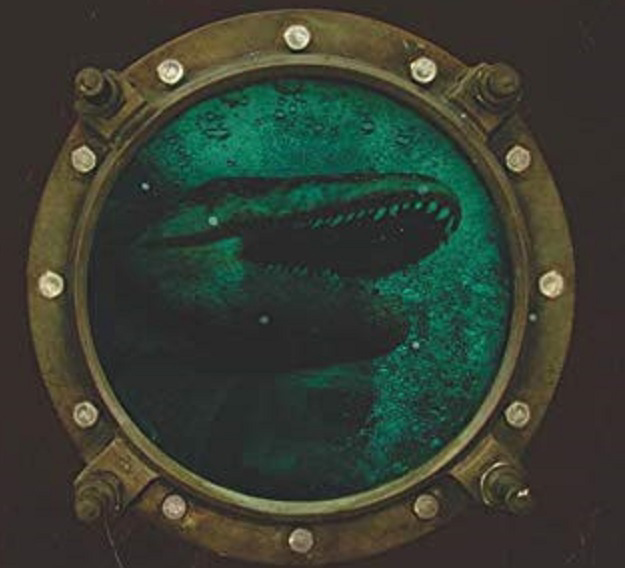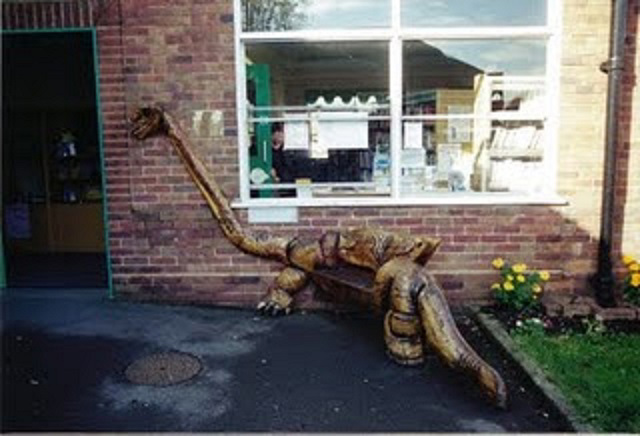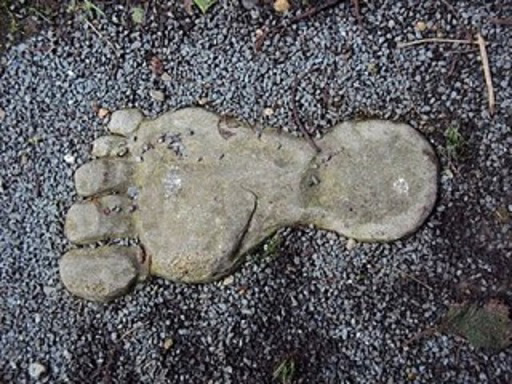Could the Field of Cryptozoology Get You Killed? There’s Some Evidence It Could

If you’re into Cryptozoology, have you ever thought that you might end up in the stomach of an unknown animal? Well, there are enough stories of that type. So, let’s have a look at a few examples. It’s a fact that – considering the many attempts that have been made by monster-hunters to suggest the Nessies are plesiosaurs, salamanders or giant eels – even the very first, reported encounter with one of the creatures of Loch Ness was steeped in death. It’s certainly St. Adomnán who we have to thank for bringing this intriguing case to our attention. The story can be found in Book II, Chapter XXVII of St. Adomnán’s Vita Columbae. To say that it’s quite a tale is, at the very least, an understatement. Born in the town of Raphoe, Ireland in 624 AD, St. Adomnán spent much of his life on the Scottish island of Iona where he served as an abbot, spreading the word of the Christian God and moving in very influential and power-filled circles. He could count amongst his friends King Aldfrith of Northumbria and Fínsnechta Fledach mac Dúnchada, the High King of Ireland. And he, St. Adomnán, made a notable contribution to the world of a certain, famous lake-monster. St. Adomnán’s Vita Columbae (in English, Life of Columba) is a fascinating Gaelic chronicle of the life of St. Columba. He was a 6th century abbot, also of Ireland, who spent much of his life trying to convert the Iron Age Picts to Christianity, and who, like Adomnán, was an abbot of Iona. In 563, Columba sailed to Scotland, and two years later happened to visit Loch Ness – while traveling with a number of comrades to meet with King Brude of the Picts. It turned out to be an amazing and notable experience, as Vita Columbae most assuredly demonstrates. Adomnán began his story thus:

“…when the blessed man was staying for some days in the province of the Picts, he found it necessary to cross the river Ness; and, when he came to the bank thereof, he sees some of the inhabitants burying a poor unfortunate little fellow, whom, as those who were burying him themselves reported, some water monster had a little before snatched at as he was swimming, and bitten with a most savage bite, and whose hapless corpse some men who came in a boat to give assistance, though too late, caught hold of by putting out hooks.” If the words of Adomnán are not exaggeration or distortion, then not only was this particular case the earliest on record, it’s also one of the very few reports we have in which one of the creatures violently attacked and killed a human being. Adomnán continued that St. Columba ordered one of his colleagues – a man named Lugne Mocumin – to take to the River Ness, swim across it, pick up a boat attached to a cable on the opposite bank, and bring it back. Mocumin did as St. Columba requested: he took to the cold waters. Or, more correctly, to the lair of the deadly beasts.
Evidently, the monster was far from satisfied with taking the life of just one poor soul. As Mocumin swam the river, a terrible thing ominously rose to the surface, with an ear-splitting roar and with its huge mouth open wide. St. Columba’s party was thrown into a state of collective fear as the monster quickly headed in the direction of Mocumin, who suddenly found himself swimming for his very life. Fortunately, the legendary saint was able to save the day – and save Mocumin, too. Now, onto a creature that haunted just about all the Scottish lochs: the Kelpie. It, too, was a creature that killed. And killed people.
Within the folklore of Loch Ness and much of Scotland, there are centuries-old legends and myths concerning supernatural, violent, shape-shifting creatures known as kelpies. Or, in English, water-horses. It should be noted, though, that although the creatures are assumed to be one and the same, there is one noticeable difference between the tales that specifically refer to kelpies and those that talk about water-horses. Typically, water-horses are far more at home in deep, sprawling lakes, while kelpies prefer pools, rivers, marshes, and lakes of a particularly compact kind. Then, there is a variant of the kelpie known as the Each-Uisge, which is a far more murderous monster than the kelpie, but which is clearly of the same supernatural stock.
The term, Kelpie, has unclear origins; although the most likely explanation is that it is a distortion of the Gaelic calpa, which translates as heifer. Kelpies are terrifying, murderous creatures that lurk in the depths of Scottish lochs, canals and rivers – and more than a few of them in Loch Ness. Not only that, like werewolves, kelpies are definitive shape-shifters; creatures that can take on multiple guises, including hideous serpentine monsters, horses, hair-covered humanoids, beautiful maidens of the mermaid variety, and horse-like creatures. The kelpie is solely driven to by a crazed goal to drown the unwary by enticing and dragging them into the depths, killing them in the process. While numerous, old bodies of water in Scotland have kelpie legends attached to them, it’s surely no coincidence that the bulk of the legends are focused upon Loch Ness. And, as we’ll see later, there is good evidence to suggest that the creatures of the loch do indeed have the ability to change their form and morph and mutate into numerous states. It’s also notable that many reports of the Loch Ness Monsters suggest they have mane-like hair flowing down the back of their head and neck – not unlike the mane of a horse, which may well have prompted both the name and imagery of the water-horse. Before we get to the matter of Loch Ness, let’s take a deeper look at this malevolent, demonic entity, the kelpie of darkest Scotland. That, by the way, came onto the land, too.

Reports of, and legends pertaining to, strange creatures in the large lochs of Scotland date back centuries – specifically to the 6th century, as we have seen with the St. Columba affair of 563 AD. With hindsight, they sound very much like kelpies, even though they had acutely different names and titles. In 1900, Alexander Carmichael, for example, told of a beast known as the Glaistic. It was a hideous monstrosity. Half-human and half-goat, it dwelled in isolated bodies of water, always ready to pounce on, and slaughter, the unwary and the unfortunate. Moving on, we have the Lavellan, described by some as a shrew-like animal and by others as a lizard-style beast. Both its saliva and breath were said to be deadly – to both man and beast. Note that the reference to the Lavellan having deadly breath echoes the old story of the wyvern of Wales’ Llyn Cynwch Lake. Loch Tummel, in Perthshire, Scotland has its own kelpie, even though it, too, goes by another name, the Buarach-Bhaoi. Highland Perthshire Tourism says of this fearsome thing that it resembled nothing less than a gigantic leech which typically wrapped itself around horses and then dragged them into the depths of its underwater abode – and draining the unfortunate animals of blood in definitive vampire style. Loch Lindie was the deadly domain of Madge, a violent, murderous monster that, said Edward Nicholson, in 1897, had the power to morph into numerous forms, including those of a raven, a cow, a horse, and a hare. Similarly, Loch Leathan was the lair of the deadly Boobrie, yet another body-altering thing with nothing but cold-hearted killing on its crazed mind.
Moving onto Bigfoot: It’s not every day that a U.S. president makes comments and observations on Bigfoot. But, as incredible as it may sound, President Theodore Roosevelt may have done exactly that in the pages of his 1890 book, The Wilderness Hunter. The president, who was also a keen hunter and an avid outdoorsman, told a story that sounds eerily, and chillingly, like a close encounter with a murderous, homicidal Bigfoot. Roosevelt said: “Frontiersmen are not, as a rule, apt to be very superstitious. They lead lives too hard and practical, and have too little imagination in things spiritual and supernatural. I have heard but few ghost stories while living on the frontier, and those few were of a perfectly commonplace and conventional type. But I once listened to a goblin-story, which rather impressed me.
“A grizzled, weather beaten old mountain hunter, named Bauman who, born and had passed all of his life on the Frontier, told it the story to me. He must have believed what he said, for he could hardly repress a shudder at certain points of the tale; but he was of German ancestry, and in childhood had doubtless been saturated with all kinds of ghost and goblin lore. So that many fearsome superstitions were latent in his mind; besides, he knew well the stories told by the Indian medicine men in their winter camps, of the snow-walkers, and the specters, [spirits, ghosts & apparitions] the formless evil beings that haunt the forest depths, and dog and waylay the lonely wanderer who after nightfall passes through the regions where they lurk. It may be that when overcome by the horror of the fate that befell his friend, and when oppressed by the awful dread of the unknown, he grew to attribute, both at the time and still more in remembrance, weird and elfin traits to what was merely some abnormally wicked and cunning wild beast; but whether this was so or not, no man can say.

“When the event occurred, Bauman was still a young man, and was trapping with a partner among the mountains dividing the forks of the Salmon from the head of Wisdom River. Not having had much luck, he and his partner determined to go up into a particularly wild and lonely pass through which ran a small stream said to contain many beavers. The pass had an evil reputation because the year before a solitary hunter who had wandered into it was slain, seemingly by a wild beast, the half eaten remains being afterwards found by some mining prospectors who had passed his camp only the night before.” It wasn’t long before disaster began. As we’re told one of the men was soon dead. And in an horrific fashion. A portion of the story goes like this: ”
“The footprints of the unknown beast-creature, printed deep in the soft soil, told the whole story. The unfortunate man, having finished his packing, had sat down on the spruce log with his face to the fire, and his back to the dense woods, to wait for his companion. While thus waiting, his monstrous assailant, which must have been lurking in the woods, waiting for a chance to catch one of the adventurers unprepared, came silently up from behind, walking with long noiseless steps and seemingly still on two legs. Evidently unheard, it reached the man, and broke his neck by wrenching his head back with its fore paws, while it buried its teeth in his throat. It had not eaten the body, but apparently had romped and gamboled around it in uncouth, ferocious glee, occasionally rolling over and over it; and had then fled back into the soundless depths of the woods. Bauman, utterly unnerved and believing that the creature with which he had to deal was something either half human or half devil, some great goblin-beast, abandoned everything but his rifle and struck off at speed down the pass, not halting until he reached the beaver meadows where the hobbled ponies were still grazing. Mounting, he rode onwards through the night, until beyond reach of pursuit.”

Now, to the “Man-Monkey of England. That has a death attached to it. Within the worlds of folklore and legend, encounters with magical and monstrous beasts abound at certain, specific locations. They include crossroads, cemeteries, and sites of archaeological significance. Such encounters are also highly prevalent in the vicinity of old bridges. There is, perhaps, no greater example of this latter point than the saga of an infernal, glowing-eyed beast known as the Man-Monkey. It’s a creature that lurks in and around the dense, wooded areas of England’s Shropshire Union Canal, which was built in the early 1800s.
So far as can be determined, sightings of the man-thing date back to January 1879. It was late on the night of January 21 that a terrible, semi-spectral, ape-like thing burst into view at the large Bridge 39, which spans the Shropshire Union Canal in the vicinity of the picturesque and tranquil village of Ranton, Staffordshire, the origins of which date back to at least the 11th century. The story came from a man crossing the bridge – with his horse and cart – on what was a cold, windy, moonlit eve; without doubt the perfect setting for a late night encounter with something terrible and infernal. As the man reached roughly the halfway point of the large, stone bridge, a hairy, humanoid entity charged out of the trees, in his very direction. Unlike the Bigfoot of the United States, the creature of Bridge 39 was far more like a chimpanzee, in terms of size, stature, and speed. The problem, of course, is that there are no wild chimpanzees in England; or, at least, there shouldn’t be. There was another issue, too; a very weird one. As it charged – and while displaying a pair of large, ominous, staring eyes that glowed silver, no less – the man had the good sense of mind to grab his horsewhip and strike out at the snarling, hairy animal. It did absolutely no good at all. As the man hit the hair-covered thing, he was terrified to see his whip pass right through its body, something which suggested it was an entity of spectral, rather than physical, flesh and blood, proportions.
The man’s horse reacted in understandable fashion: it first rose up onto its hind legs, and, then, filled with fear, it broke free of its cart and galloped across the bridge and vanished into the darkness. The man set off in hot pursuit, while the Man-Monkey raced at high speed towards a dirt pathway that led down to the cold waters of the old canal. Thankfully, the man was able to catch up with the horse – which had made its way to the outside of a local inn, one which the man frequented every Friday night. He quickly tied the horse to a post and flung open the door of the pub. In an instant, everyone in the room was silenced. The man, half-crazed by fear, told the crowd of what he had seen, something that plunged one and all into states of fear and anxiety. For weeks afterwards, the people of Ranton – and the various, additional, small hamlets that surrounded the canal – had jangled nerves and sleepless nights. The presence of the Man- Monkey was something which caused such a sensation that the local police opened a file on the monster-themed affair. Interestingly, the police heard rumors of earlier encounters with the bridge beast that very same month; they were rumors that suggested sightings of the Man- Monkey began just days after a local man died after falling into the canal and drowning. There was, however, another theory: that the sinister creature had killed the poor man by deliberately holding him down and drowning him. All of this tells us that while Cryptozoology is great fun, it can be fatal, too…




